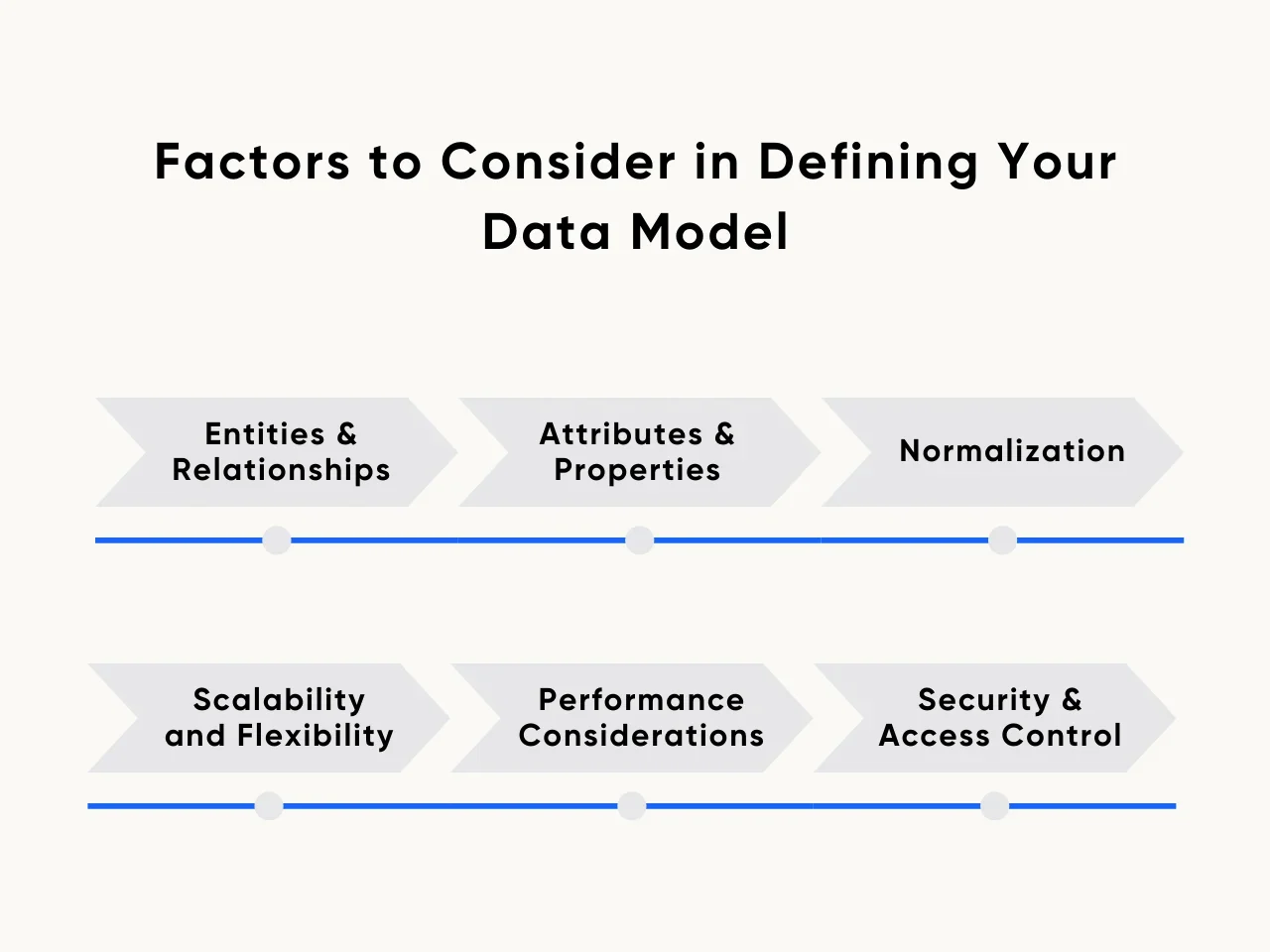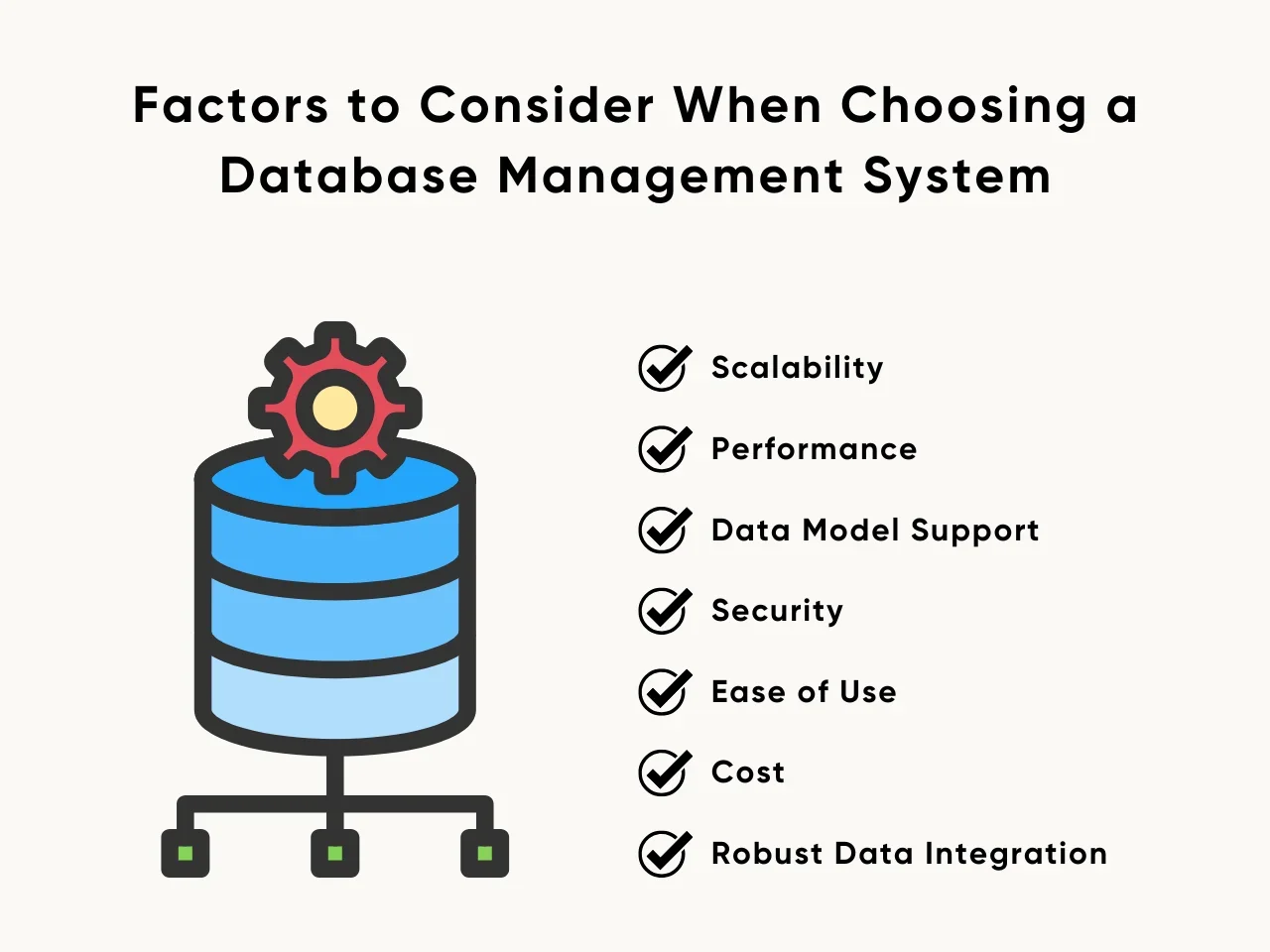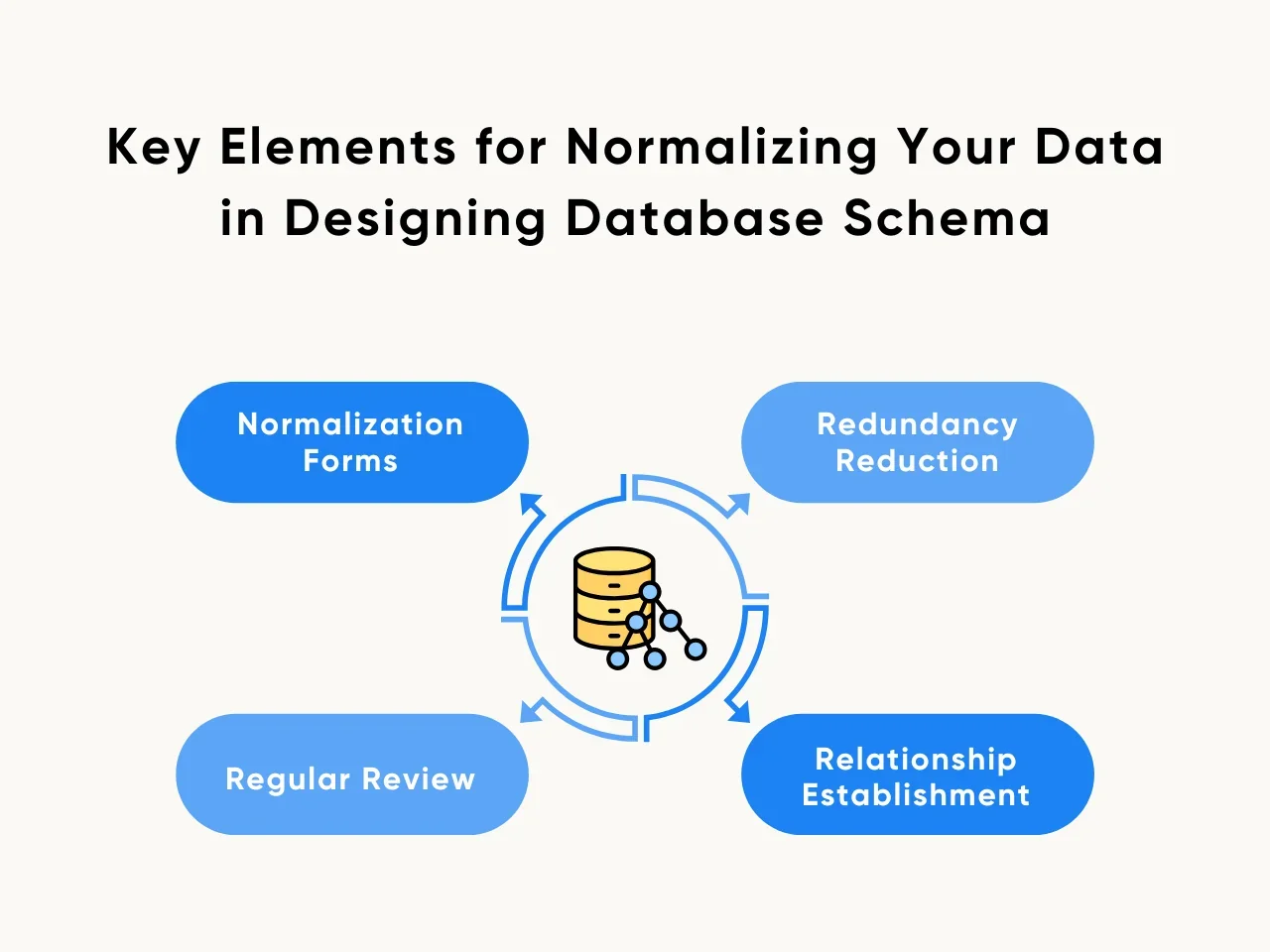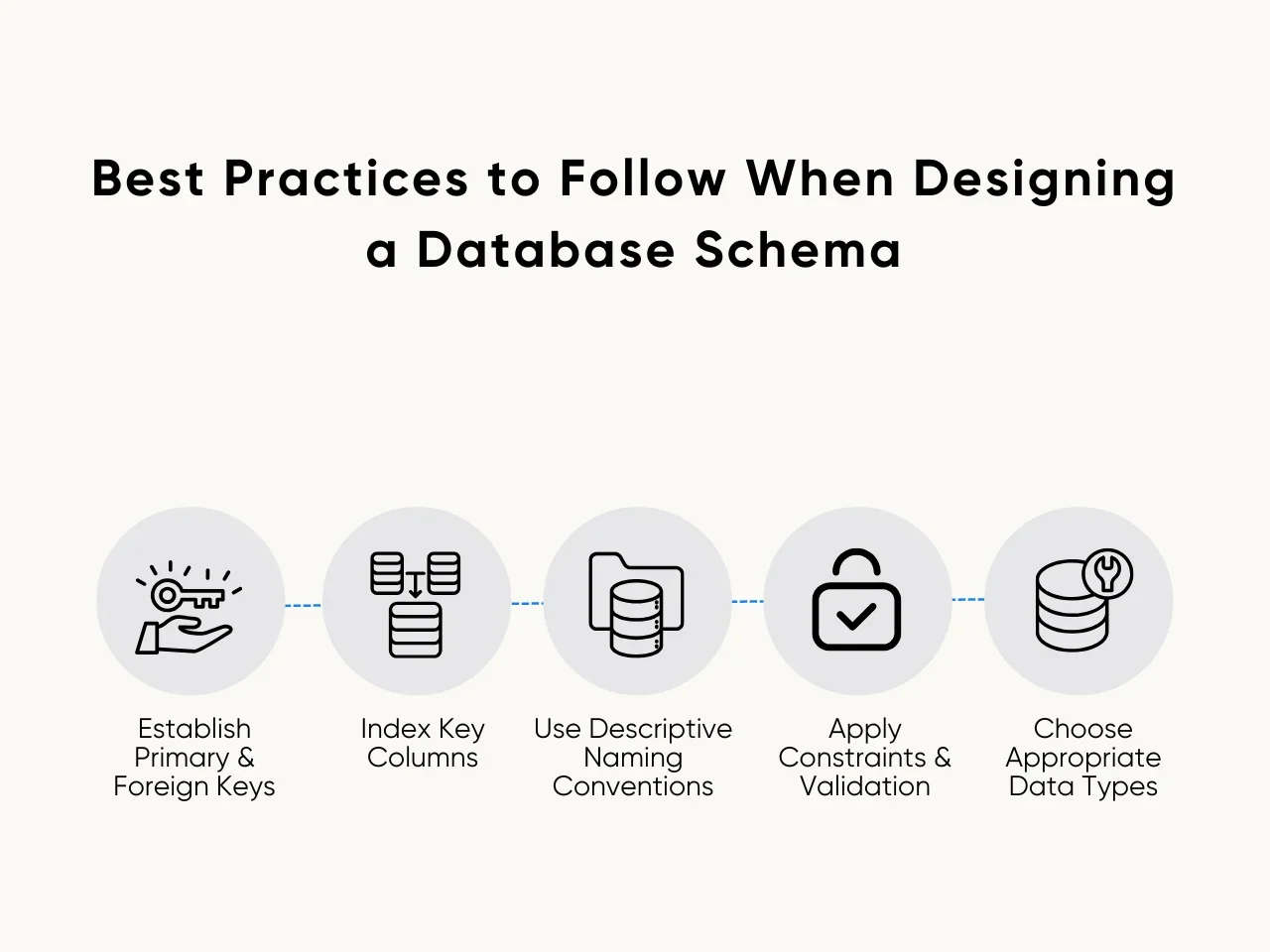Understanding the intricacies of database schema design is an essential practice in seamless software development. A well-defined schema ensures development teams sync up with users' and stakeholders' needs and expectations. When development teams dive into this, they lay a solid foundation by sorting out the data organization, relationships, and constraints needed for smooth data management.
At Aloa, we recognize how crucial it is to have a meticulously crafted database schema. We value that it’s a key to ensuring that your database solutions meet the unique needs of both users and stakeholders. With our wealth of experience across diverse database projects, we've seen firsthand the powerful effect a well-designed schema can have on the success of data-driven ventures. We're all about ensuring your data works as hard as you do.
In this blog, we will explore the concept of database schema and how it fits into database design and management. We'll discuss why the effective organization of data is crucial and give you some practical tips for designing and optimizing your database schemas. Plus, we'll throw in some best practices to help you avoid common pitfalls and ensure your database runs smoothly.
Let’s get started!
What Is Database Schema?
A database schema defines the structure of a database, including tables, fields, relationships, and constraints. It is a blueprint for organizing and storing data, ensuring data integrity and consistency. A schema ensures the integrity and coherence of the stored information by defining the organization and interconnections of data elements.
With that insight, database schemas are crucial in database management and development. They provide a structured framework for designing databases, ensuring data integrity, and facilitating efficient data retrieval and manipulation operations. Properly designed and maintained database schemas are essential for building robust and scalable database systems.
Types of Database Schemas
Knowing about different types of database schemas is key to picking the right one for your data storage and retrieval needs. With a solid understanding of these schemas, you can ensure that your database operates efficiently.

Here are the several types of database schema, each serving distinct purposes and catering to specific application requirements.
Flat Model
The flat model presents a basic database schema with a single, straightforward two-dimensional table configuration. Data in this schema is structured in rows independently, devoid of interconnections. Suited for uncomplicated data storage needs, it's advantageous for small-scale projects requiring simple data retrieval methods.
Hierarchical Model
The hierarchical model organizes data into a tree-like structure featuring parent-child relationships, making it well-suited for specific applications. While it facilitates efficient data retrieval, complex queries can present challenges. Particularly adept for structured data with one-to-many relationships, this model provides rapid read access.
Network Model
When you organize data in a graph-like structure, you're using what's called the network model. This model facilitates intricate data retrieval, providing flexibility with multiple parent and child types per record by incorporating one-to-many connections. Perfect for tangled data relationships, it's quicker to access, but managing it needs some specialized database skills to keep things on track.
Relational Model
The relational model is a type of database schema that efficiently organizes data into tables with rows and columns, ensuring optimal storage. Tables establish relationships through keys to uphold data integrity. Due to its structure, structured query language (SQL) commonly manages relational databases, which are ideal for complex queries and analysis. Businesses favor this model for its scalability and adaptability in managing diverse datasets.
Non-Relational Model
Unlike relational databases' rigid tabular format, non-relational databases provide schema flexibility, accommodating dynamic and unstructured data types more effectively. Popular non-relational databases include MongoDB, Cassandra, Redis, and Neo4j, each designed for specific data storage and retrieval needs. This model suits scenarios needing rapid development and effective semi-structured or unstructured data management, like web apps, real-time analytics, and content management systems.
Star Schema
Star schema is a data modeling technique that consists of a central fact table connected to multiple dimension tables. This design simplifies data analysis queries by providing a clear database structure for storing and retrieving information, even though it may involve duplicating data. It is designed to enhance query performance, which is why it's a popular choice for business intelligence applications.
Snowflake Schema
The Snowflake schema is a robust data modeling strategy, strategically arranging data across interconnected tables to slash redundancy and bolster query efficiency. Its design, characterized by a proliferation of foreign key relationships, adds layers of intricacy to its maintenance. Similarly, its usefulness becomes evident in data warehouses, particularly in executing analytical queries on large datasets.
How To Design Database Schema?
Designing a robust and efficient database schema is essential for building scalable and reliable database systems. A well-designed schema ensures data integrity, optimal performance, and ease of maintenance. Here's a comprehensive guide to help you out:

Step 1: Define Your Data Model
Defining your data model is essential when designing a database schema. Begin this process by identifying the entities, such as customers or products, their attributes like names or quantities, and the relationships connecting them. This approach ensures your database schema not only stores data but does so in a way that genuinely reflects the intricacies of your business or project.
As you understand your data requirements thoroughly, you're laying the groundwork for a database schema that resonates with the unique aspects of your domain. Properly defining it is key to long-term success, as it serves as the backbone of your data management strategy. Some essential factors to lay its foundation include:

- Entities and Relationships: Identify the main entities relevant to your application or business process. Consider how these entities relate to each other and define their relationships.
- Attributes and Properties: When defining your data model, it's essential to determine each entity's specific attributes or properties thoroughly. These attributes represent the characteristics or information you want to store, so ensuring thorough definition guarantees accurate capture of all relevant data.
- Normalization: Consider normalization techniques to minimize redundancy and optimize data storage. Normalize your data to ensure it is organized efficiently and to avoid anomalies such as data duplication or inconsistent updates.
- Scalability and Flexibility: Ponder your application or system's future growth and evolution. Design your data model to be scalable and flexible, allowing for easy expansion and modification as your requirements change over time.
- Performance Considerations: Evaluate how your queries will run, what indexing strategies to employ, and how to retrieve data efficiently. Optimizing for performance ensures your database operates smoothly, even under heavy loads or complex queries.
- Security and Access Control: Decide who should access specific data and place the proper security measures. This approach helps protect sensitive information and keeps your database safe from unauthorized access and potential threats.
Step 2: Choose the Right Database Management System (DBMS)
Now that you've got your project all mapped out, it's time to pick the perfect database management system (DBMS). Your DBMS is the backbone of your project, dictating how your data flows and scales. Here are some key factors to remember to ensure that it aligns seamlessly with your project requirements and chosen data model:

- Scalability: Ensure the DBMS can grow with your project. The system should handle the load as your data increases without sacrificing performance.
- Performance: Look for a DBMS that can deliver fast response times and efficient data processing. This approach ensures smooth operation and optimal user experience.
- Data Model Support: The DBMS should support your chosen data model, whether it's relational, NoSQL, or another approach. Compatibility with your data structure is crucial for effective management and retrieval.
- Security: Evaluate the security features offered by the DBMS. It should provide robust authentication, authorization, and data encryption mechanisms to protect sensitive information.
- Ease of Use: Choose a DBMS that is user-friendly and intuitive. A well-designed interface and comprehensive documentation can simplify database administration tasks and reduce learning curves.
- Cost: Consider the total cost of ownership, including licensing fees, maintenance, and potential scalability costs. Balance your budget constraints with the features and performance offered by the DBMS.
- Robust Data Integration: Ensure efficient storage and retrieval by facilitating data integration across diverse platforms and systems with a robust DBMS. Also, exploring Airflow alternatives can offer simpler and more efficient ways to manage complex workflows.
Step 3: Design Your Schema
With a comprehensive comprehension of your data model and selection of your database management system (DBMS), crafting a well-defined schema becomes paramount. The schema acts as the blueprint for your database, outlining the underlying structure of tables, relationships, and constraints necessary for maintaining data integrity and optimizing performance.
In this phase, it's imperative to meticulously organize your tables and identify your primary and foreign keys to identify each record and establish relationships between these tables. Primary keys serve as the unique identifiers for rows within a table, facilitating efficient data retrieval and modification. Meanwhile, foreign keys establish links between tables, ensuring referential integrity and enabling the implementation of relational database concepts such as joins.
Step 4: Normalize Your Data
When working on your database schema, it's essential to consider normalization. This technique helps reduce redundancy and optimize data storage, ensuring efficient organization and preventing data duplication or inconsistent updates. Here are some key elements to keep in mind as you normalize your data and enhance the performance of your database.

- Normalization Forms: Gain a comprehensive understanding of various normalization forms, such as first, second, and third standard forms. Applying these forms ensures efficient organization of your data.
- Redundancy Reduction: Identify and remove redundant data to optimize the storage system and bolster data integrity within your database.
- Relationship Establishment: Clearly define relationships between tables to streamline data retrieval and uphold consistency throughout your database structure.
- Regular Review: Regularly assess and fine-tune your normalization strategy as your database evolves. This practice ensures continued optimal performance and effectiveness over time.
Step 5: Optimize Performance
It’s time to take your database schema to the next level by optimizing its performance. Start by identifying the frequently queried columns and consider applying indexing to speed up searches. For those hefty tables, partitioning—a database performance optimization technique—makes data retrieval more efficient.
Additionally, don't hesitate to denormalize your data strategically if it helps improve query speeds. These tweaks and optimizations will not only enhance the overall performance of your database but also ensure a smoother experience for your database users, keeping them engaged and satisfied.
Step 6: Document Your Schema
Once you’re done with schema optimization, ensure your database schema is well-documented. This step means detailing everything from database schema table structures and relationships to data types and constraints. Comprehensive documentation, including a detailed data dictionary, is like a guidebook for developers, administrators, and other stakeholders, helping them navigate and understand your database.
Moreover, robust documentation is a valuable reference point for troubleshooting and future development efforts. When issues arise, or new features should be implemented, well-documented schema details can significantly streamline the process, saving time and reducing errors. Thus, investing time in thorough documentation pays dividends in the long run, enhancing the reliability and scalability of your database system.
Step 7: Implement and Maintain Your Schema
Now, it's time to implement your database schema within your chosen DBMS server. Once implemented, keeping a close eye on its performance and integrity is crucial. An effective way to do this is by regularly monitoring and maintenance to help adapt to changing business needs, fine-tune performance, and uphold data consistency and integrity.
In addition, regular maintenance of your schema keeps your database adaptable to changing needs and technological advancements. You can prevent issues from escalating, reducing downtime and operational disruptions by staying vigilant and making timely adjustments. Moreover, consistent maintenance fosters a culture of improvement, enabling your database to evolve with your business and technological innovations.
Best Practices to Follow When Designing a Database Schema
Adhering to best practices is crucial for optimal performance and scalability when designing a database schema. It's fundamental to ensure optimal performance and scalability by adhering to best practices in database design. Here are some essential principles to ensure an efficient and well-structured database:

Establish Primary and Foreign Keys
In database structure setup, primary and foreign keys play pivotal roles, serving as the foundation for your database organization. Exclusive identifiers within database tables and primary keys guarantee clear-cut distinctions for each row. Meanwhile, foreign keys serve as crucial connectors, linking different tables to uphold relationship integrity and maintain data consistency throughout the database.
Index Key Columns
Key columns should be indexed to enhance query performance and ensure efficient database operation, particularly as it expands. Indexing mirrors the functionality of a well-organized book index, facilitating swift information retrieval within your database system. You can further streamline database operations and enhance overall system efficiency by strategically indexing key columns based on query patterns and data access frequency.
Use Descriptive Naming Conventions
Well-defined naming conventions serve as guideposts within your database, promoting clarity and facilitating comprehension. Through the adoption of intuitive names for tables, columns, and constraints, navigating and maintaining your schema becomes effortless and straightforward.
Apply Constraints and Validation
Constraints protect your data integrity, imposing regulations and averting unforeseen complications. These constraints enforce rules and preempt unexpected issues. You fortify the cleanliness and reliability of your database by incorporating unique and check constraints alongside validating input data at the application level.
Choose Appropriate Data Types
Selecting suitable data types for your columns resembles choosing the right tool for a job to ensure efficiency and accuracy. Use integers for numerical data, dates for date and time information, and varchar for variable-length strings. This thoughtful approach to data type selection optimizes storage and upholds data integrity across your entire database architecture.
Key Takeaway
Designing a robust database schema is essential for ensuring that your project data management aligns with the stakeholders’ requirements and expectations. A well-designed schema simplifies data organization, capturing the core structure, relationships, and constraints vital for efficient data storage and retrieval, especially in SQL server space.
Analyzing database schema requirements empowers your project team to identify key data entities, relationships, and constraints crucial for data integrity and performance. When you delve into these details, you pave the way for designing schemas that streamline data storage, retrieval, and manipulation processes, making your team's job management much smoother and more efficient.
Want to learn more about how database schema works? Seize the opportunity to contact us at [email protected] today. Sign up for our email list via the Aloa blog page to enhance your skills and knowledge. Our team is committed to supporting you in crafting impactful database schemas that drive efficiency and scalability. Let's collaborate to empower your project toward effective database creation in 2024.

